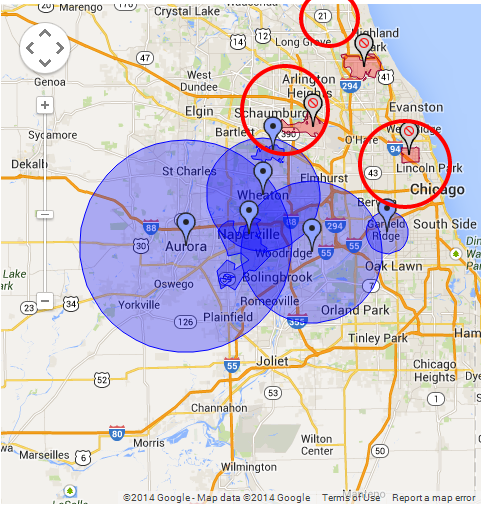Search marketing and pay per click (PPC) advertising can put a bite in your medical practice’s marketing budget if not executed properly. However, with a carefully managed campaign, you can get quality results that bring new patient revenue to your practice.
Search marketing and pay per click (PPC) advertising can put a bite in your medical practice’s marketing budget if not executed properly. However, with a carefully managed campaign, you can get quality results that bring new patient revenue to your practice. A few techniques every search marketing campaign should employ:
Geotarget for Best Exposure
With exception to a few specialites (infertility, robotic surgery, etc….), people look for medical practitioners who are in their local area. And, many people have restrictions on their insurance that, if you are too far away, means you will be considered out-of-network.
By targeting specific towns or even zip codes, you can make sure that only those who are more likely to choose your practice see your ads.
Longtail Keywords
Competition on many keywords is high, leading to a higher cost per click. Why not focus on what makes your practice unique while also lowering your PPC advertising costs? For instance, if you offer extended hours, try for results on “extended hours doctor” instead of just “doctor” or “general practitioner.” Make a list of the services you would like to promote and research the popularity and cost per click for those longer terms.
Negative Keywords
Over time, analytics will help you identify and develop a list of search terms that do not lead to new patients or revenue. Add these terms to your negative keyword list so that ads are not being shown anytime these terms appear in a search query. Adding negative keywords will help better target your promotions to those searches more likely to convert and helps to lower the number of people who bounce when they hit your landing page or website.
Negative keywords to consider can include: references to free consultations; insurers whose plans you do not accept; and, conditions you do not treat. Over time, your negative keyword list can become a powerful tool for eliminating prospects who are not likely to become patients and managing cost out of your pay per click program.
Qualifying Ad Text
It can be tempting to use ad text that will be alluring to the widest range of people. However, this can lead to clicks from people who may not be a good fit for your practice and are less likely to call for an appointment. For instance, if you are a dermatologist who specializes in acne patients, address that in your ad.
Choose Your Landing Page Well
Instead of sending all traffic to your site’s homepage, send them to a landing page created specifically for your campaign. A “New and Prospective Patient” page can be a good fit for a general campaign. If you are advertising to draw attention to a new service, create a page where it is the focus. Landing pages should be clean and uncluttered with a clear call to action. The simpler it is for patients to find just the information they need, the better. Make it easy for them to decide that you are the professional they are looking for and call for that first appointment.
It takes time, budget, data and experimentation to develop a formula for the best search marketing campaigns. By optimizing your strategy over time, you can get the most value on your pay per click advertising.

